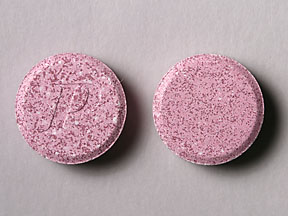Pepcid Complete and Alcohol/Food Interactions
There are 4 alcohol/food/lifestyle interactions with Pepcid Complete (calcium carbonate / famotidine / magnesium hydroxide).
Famotidine Nicotine
Minor Drug Interaction
Information for this minor interaction is available on the professional version.
Famotidine Nicotine
Minor Drug Interaction
Information for this minor interaction is available on the professional version.
Famotidine Nicotine
Minor Drug Interaction
Information for this minor interaction is available on the professional version.
Calcium Carbonate Food
Moderate Food Interaction
Consumer information for this interaction is not currently available.
ADJUST DOSING INTERVAL: Administration with food may increase the absorption of calcium. However, foods high in oxalic acid (spinach or rhubarb), or phytic acid (bran and whole grains) may decrease calcium absorption.
MANAGEMENT: Calcium may be administered with food to increase absorption. Consider withholding calcium administration for at least 2 hours before or after consuming foods high in oxalic acid or phytic acid.
Switch to professional interaction data
Pepcid Complete drug interactions
There are 523 drug interactions with Pepcid Complete (calcium carbonate / famotidine / magnesium hydroxide).
Pepcid Complete disease interactions
There are 10 disease interactions with Pepcid Complete (calcium carbonate / famotidine / magnesium hydroxide) which include:
- phosphate calcifications
- cardiac contraction/conduction
- malabsorption
- renal dysfunction
- sarcoidosis
- GI bleeding
- inflammatory bowel disease
- intestinal obstruction disorders
- renal dysfunction
- renal dysfunction
More about Pepcid Complete (calcium carbonate / famotidine / magnesium hydroxide)
- Pepcid Complete consumer information
- Check interactions
- Compare alternatives
- Reviews (7)
- Drug images
- Latest FDA alerts (1)
- Side effects
- Dosage information
- During pregnancy
- Drug class: H2 antagonists
- En español
Related treatment guides
Drug Interaction Classification
| Highly clinically significant. Avoid combinations; the risk of the interaction outweighs the benefit. | |
| Moderately clinically significant. Usually avoid combinations; use it only under special circumstances. | |
| Minimally clinically significant. Minimize risk; assess risk and consider an alternative drug, take steps to circumvent the interaction risk and/or institute a monitoring plan. | |
| No interaction information available. |
Further information
Always consult your healthcare provider to ensure the information displayed on this page applies to your personal circumstances.


